As Top Gun’s longtime craftsmanship judge, I’m frequently asked about what I’m looking for on a scale model. Surface detail and overall texture are very important.

Are the fasteners and rivets of the proper size, pattern, and spacing? Are they of the correct type? If they are applied as glue dots to produce a “raised” fastener and the documentation photos show the surface with flush rivets, a downgrade is in order. Exposed, non-scale control linkages are another area for a potential downgrade; unless Du-Bro makes full-scale clevises and control horns for the aero industry, I wouldn’t expect to find them visible on a model. The same goes for tires; the tires on your Cub, Champ, or FW 190 shouldn’t have a “Sullivan Lite Fly” logo visible on them.
Moving along to another scrutinized area: wheel wells. It always amazes me that a builder will produce a superb model, complete with an outstanding landing-gear mechanism, while the home for that landing gear is completed with visible 1/4 x 1/2-inch spruce spars, plywood reinforcement ribs, and raw balsa upper-wing skins—all of these items unpainted, except for overspray, no less? Hinge lines on most control surfaces shouldn’t vary a lot in width and the fit should be close, with some exceptions being Cub-type models where control-surface gaps can be significant. The hinges themselves? Back to Du-Bro and Robart—they work great but may be downgraded if the full-scale hinge consists of metal fittings, nuts, and bolts.
Surface edges are another trap. The sharp ones should be sharp, and when applying color coats, the builder should move the surface to get paint on the edges rather than letting the primer be visible.
Denne historien er fra September 2019-utgaven av Model Airplane News.
Start din 7-dagers gratis prøveperiode på Magzter GOLD for å få tilgang til tusenvis av utvalgte premiumhistorier og 9000+ magasiner og aviser.
Allerede abonnent ? Logg på
Denne historien er fra September 2019-utgaven av Model Airplane News.
Start din 7-dagers gratis prøveperiode på Magzter GOLD for å få tilgang til tusenvis av utvalgte premiumhistorier og 9000+ magasiner og aviser.
Allerede abonnent? Logg på
Legend Hobby / Seagull Models - Cessna Grand Caravan 208
The Cessna Grand Caravan 208 is a legend in aviation circles. A single engine utility aircraft that punches up with capabilities that rival many twin engine aircraft in its class. Its seemingly simple configuration belies its near extreme utility.
PROPER CG LOCATION FOR AEROBATICS
If you are getting into aerobatics and are starting to perform more advanced maneuvers, it is time to discuss ways you can not only become a better pilot, but how you can also improve the flight characteristics of your airplanes.
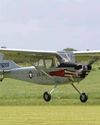
Legend Hobby 13-Foot L-19 Bird Dog/ Cessna O-1
This famous multi-mission single engine observation aircraft served from 1950-1974. From calling out target locations to providing intel/recon information, the Bird Dog was a valued asset in both the Korean War and Vietnam.
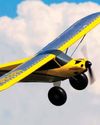
EARN YOUR WINGS
10 Tips for First-Flight Success
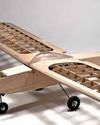
Old School Model Works Fifty Six
The Fifty Six takes its design cues from the original .09- to .15-size Carl Goldberg Falcon 56 of the 1960s. Reworked to incorporate modern, lasercut techniques to make kit building better than ever.
FLYING TWINS Multi-engine warbirds made easy
Let’s face it, there’s just something extra special about twin-engine RC aircraft. Most modelers stop what they’re doing when a twin fires up on the flightline.
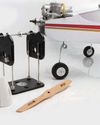
HOW TO BALANCE PROPELLERS
Four easy steps to increase performance and reduce vibration
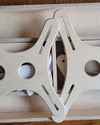
PRODUCT REVIEW: RC PLANE STANDS BENCHTOP MODEL
I’m a sucker for shop stuff. I buy tools I will probably never use just because they are cool, or I might need to use them someday. When Glen from RC Plane Stands reached out about a review, however, I knew as soon as I browsed their website that I would be receiving something I would use a lot, maybe even daily.
SPIRIT OF RHINEBECK AWARD WINNER
A close up of Norman Malinowski’s 1/3-scale Albatros
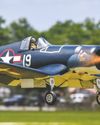
CENTER OF GRAVITY BASICS
The secret to a plane that flies well